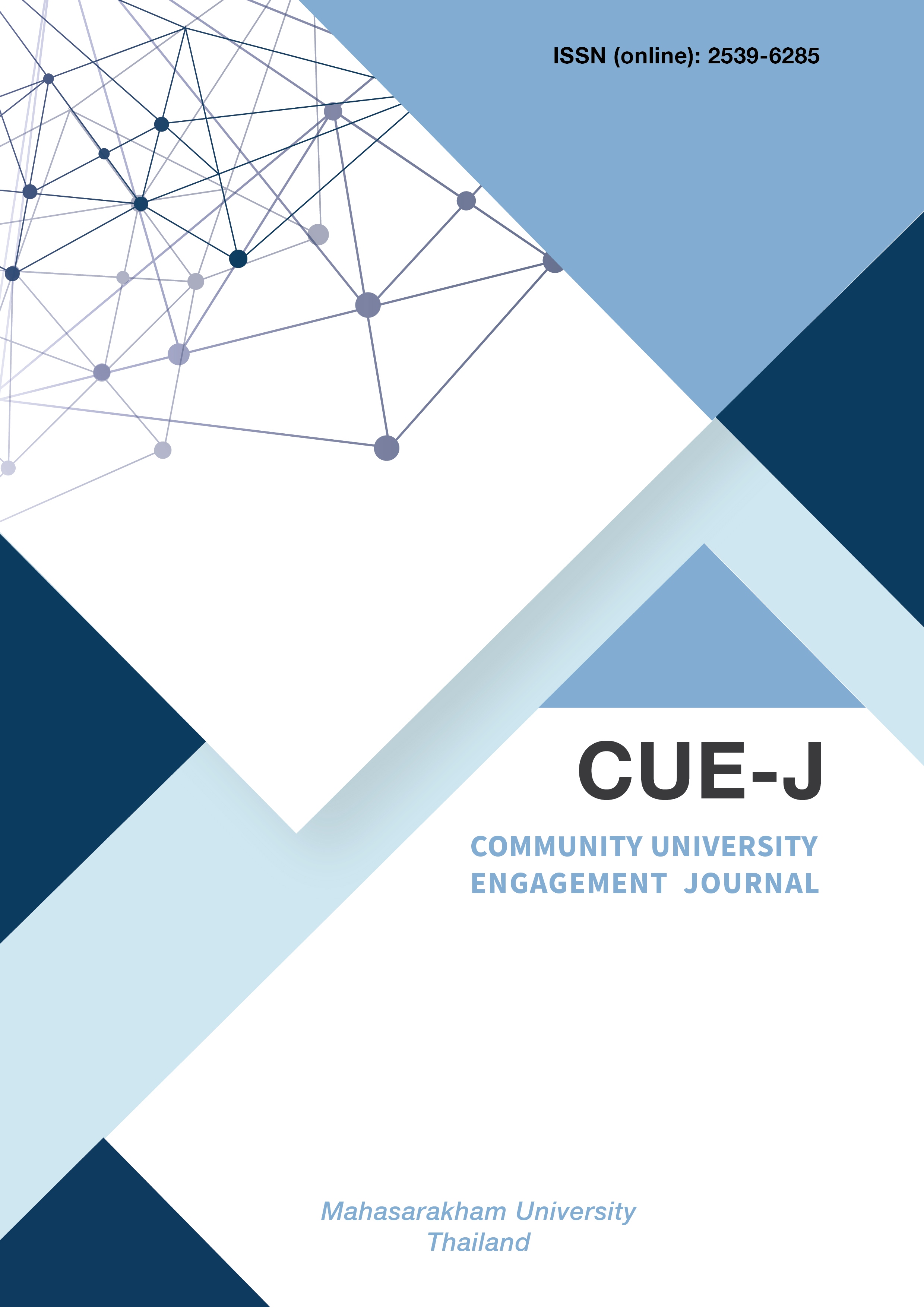An analysis of a suitable model for community power plant development: A case study of the Northeast region of Thailand
Main Article Content
Abstract
This paper aims to analyse a suitable model for developing a community power plant in the northeast region of Thailand. In this study, six provinces including Nakhon Ratchasima, Ubon Ratchathani, Chaiyaphum, Buriram, Sisaket, and Udon Thani were selected based on quantity potential and biomass diversity. The results showed that Nakhon Ratchasima appeared to be highest potential in electricity generation from residual biomass (about 83 MW - representing a total of 13community power plants). The capacity is capable of generating electricity from residual biomass up to 3,278 million units per year and representing an estimated revenue from electricity sales of 14,026 million Baht per year. The capacity for community based electricity generation in the other provinces would be between 29 and 51 MW which represents about 5-8 community power plants per province with the capacity to generate electricity from residual biomass approximately 1,145-2,006 million units per year. The revenue from electricity sales would be about 4,899-8,583 million Baht per year. In order to develop a community power plant in a sustainable way, this paper also recommends the addition of other alternative fuels for power generation as well as the promotion of energy crops to be used for community power plants. This would provide several benefi ts including gain an extra income from the sales of electricity and energy crops, increase in employment in the community and the agricultural sector, and providing job opportunities for young workers whose normally relocate themselves to work in the industrial sector in the metropolitan area. Such benefi ts would help strengthen the family and hence enhance
the community sustainability
Article Details

This work is licensed under a Creative Commons Attribution-NonCommercial-NoDerivatives 4.0 International License.
All authors need to complete copyright transfer to Community University Engagement Journal prior to publication. For more details click this link: copyright & license
References
DEDE. (2022). Energy balance of Thailand: 2011-2021. Department of Alternative Energy Development and Effi ciency, Ministry of Energy, Bangkok, Thailand. https://www.dede.go.th/ewt_news.php?nid=47340.
DEDE. (2020). Handbook for development and investment in renewable energy production (Biomass). Department of Alternative Energy Development and Effi ciency, Ministry of Energy, Bangkok.
DEDE. (2013). Biomass potential database in Thailand. Department of Alternative Energy Development and Effi ciency, Ministry of Energy, Bangkok, Thailand. https://webkc.dede.go.th/testmax/node/2450.
EPPO. (2020). National energy policy council meeting 2/2020. Energy Policy and Policy Offi ce, Bangkok. https://www.eppo.go.th.
OAE. (2021). Agricultural economics information. Offi ce of Agricultural Economics, Bangkok. Available from: https://www.oae.go.th.
EFE. (2020). Biomass calendar. Energy for Environmental Foundation, Bangkok. https://www.efe.or.th.
ERC. (2022). Regulations of the energy regulatory commission on electricity procurement from very small power producers, community power plant project for local economy. Energy Regulatory Commission, Bangkok. https:// www.erc.or.th.
Wattana, S. (2021). The renewable energy. Mahasarakham University.

